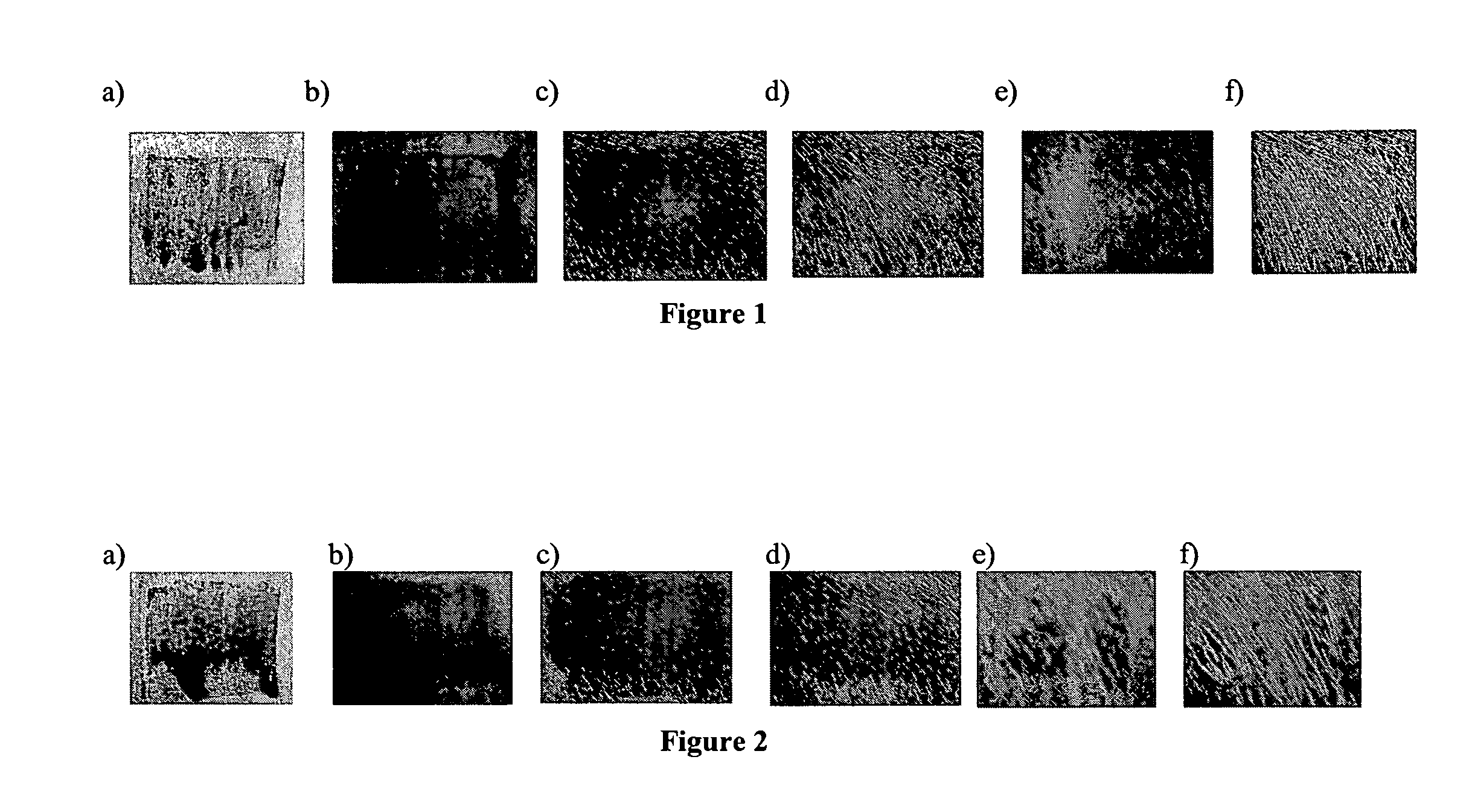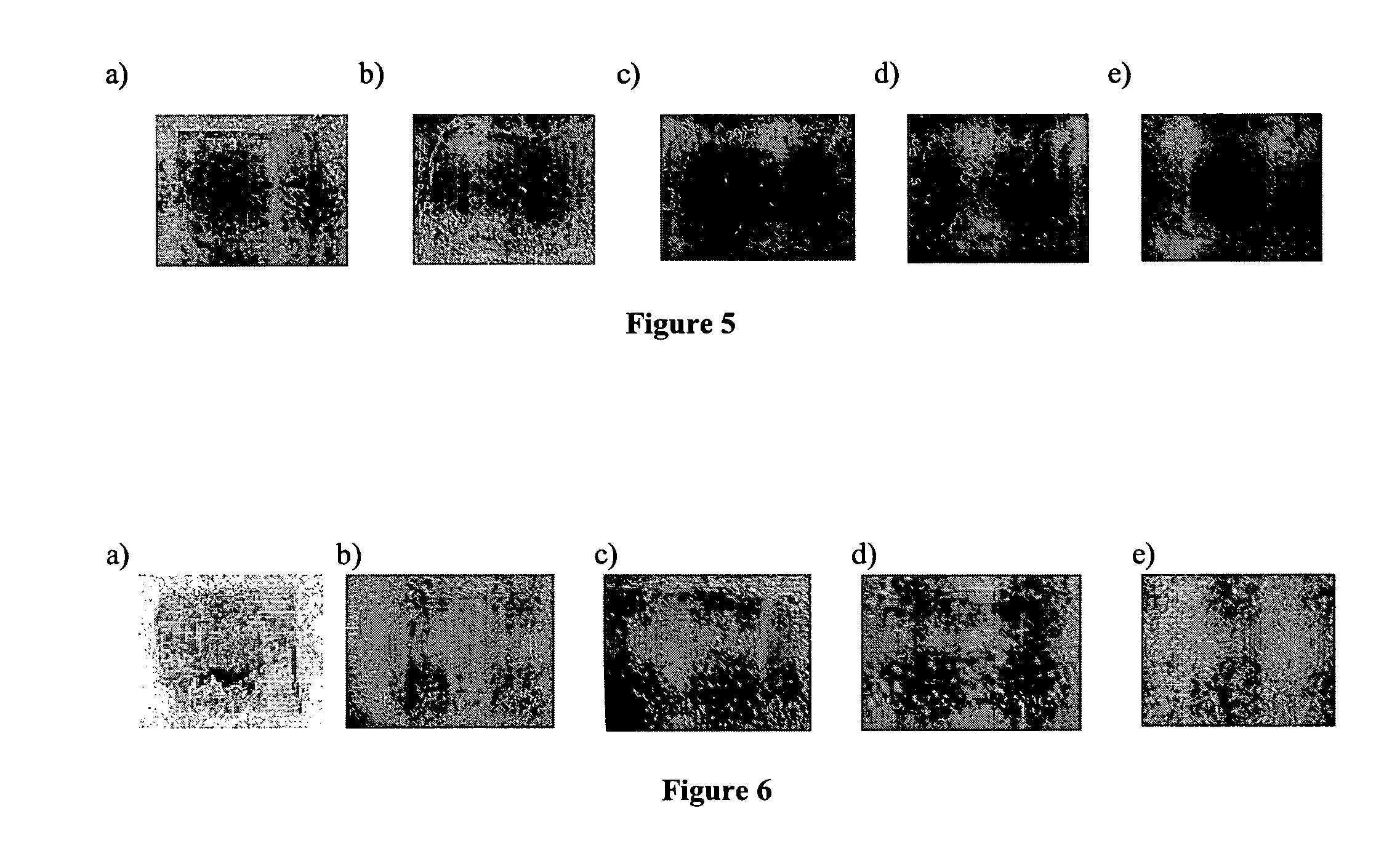Methods for modulating topical inflammatory response
a topical inflammatory response and modulation technology, applied in the direction of fibrinogen, plant ingredients, non-active ingredients of pharmaceuticals, etc., can solve the problems of scar formation and new skin formation, and achieve the effects of restoring local osmolarity of the topical site, shortening the topical inflammatory response, and hydrating the topical si
- Summary
- Abstract
- Description
- Claims
- Application Information
AI Technical Summary
Benefits of technology
Problems solved by technology
Method used
Image
Examples
example 1
Clinical Observations of Topical Inflammation and Wound Infections
[0061] Animal studies were performed to evaluate the intensity and duration of topical inflammation associated with the healing of partial thickness wounds as well as full thickness wounds as modulated by five different types of wound dressings.
Procedures
[0062] In the partial-thickness wounds study, six young domestic pigs weighing about 15 kg to about 18 kg were conditioned for at least 2-3 days prior to the experiment. Animals were fed a commercial growing diet and housed individually at a controlled temperature ranging from about 20° C. to about 25° C. The experimental protocol was approved by the Ethical Committee of the Department of veterinary medicine of the University of Montreal, and the animals were handled according to the “Guide for the Care and Use of Laboratory Animals.” Skin of the animals was shaved with a hair clipper and washed with neutral soap. No aseptic solution was applied on the skin.
[006...
example 2
[0086] Histological Evidence of Topical Inflammation
Procedures
[0087] To evaluate how treatment with different types of wound dressing affects topical inflammation at a cellular level, dermal specimens including the wound sites studied in Example 1 were obtained.
[0088] Animals were sacrificed at predetermined time points by an overdose of sodium pentobarbital. Immediately after sacrifice, dorsal skin of each pig was removed and fixed in 10% neutral buffered formalin. After 2 days, the fixed tissues were embedded in paraffin blocks. Wounded areas of the skin were identified and sliced at 5 μm. Hematoxylin / eosin staining was used for general observation, and Masson's trichrome coloration was used for analysis of collagen organization.
[0089] Histological assessments and analyses were made using a Leica DM4000B Microscope (Leica Microsystems, Cambridge, United Kingdom). Histological photographs were taken with a Leica Digital FireWire Camera connected to a Leica Q550 Imaging Worksta...
example 3
Microbiological Evidence of Wound Infections
[0094] Skin is covered with micro-organisms. Bacteria such as Staphylococcus epidermidis, corynebacteria, brevibacteria, and other coagulase-negative staphylococci form part of the normal skin flora. Although wound flora is usually different from normal skin flora, microbial colonization of the wound by itself generally does not lead to wound infections. It is only when host defenses are no longer able to maintain a manageable bioburden, whether in terms of species or number, that critical colonization results. Once this happens, the wound will most likely become infected if left untreated. Examples of common pathogens responsible for wound infections include Staphylococcus aureus, beta-hemolytic streptococci (S. pyogenes, S. agalaciae), Escherichia coli, Proteus, anaerobes, Pseudomonas, Acinetobacter, and Stenotrophomonas (Xanthomonas).
Procedures
[0095] To monitor changes in wound flora over the course of the wound healing process, a ...
PUM
| Property | Measurement | Unit |
|---|---|---|
| molecular weight | aaaaa | aaaaa |
| molecular weight | aaaaa | aaaaa |
| molecular weight | aaaaa | aaaaa |
Abstract
Description
Claims
Application Information
 Login to View More
Login to View More - R&D
- Intellectual Property
- Life Sciences
- Materials
- Tech Scout
- Unparalleled Data Quality
- Higher Quality Content
- 60% Fewer Hallucinations
Browse by: Latest US Patents, China's latest patents, Technical Efficacy Thesaurus, Application Domain, Technology Topic, Popular Technical Reports.
© 2025 PatSnap. All rights reserved.Legal|Privacy policy|Modern Slavery Act Transparency Statement|Sitemap|About US| Contact US: help@patsnap.com



